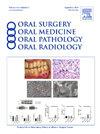Ultrasound-based deep learning to differentiate salivary gland tumors
IF 2
3区 医学
Q2 DENTISTRY, ORAL SURGERY & MEDICINE
Oral Surgery Oral Medicine Oral Pathology Oral Radiology
Pub Date : 2025-03-29
DOI:10.1016/j.oooo.2025.03.014
引用次数: 0
Abstract
Objective
Accurate preoperative diagnosis is essential for selecting appropriate surgical interventions. This study aims to develop a deep learning model based on ultrasound (US) imaging to accurately differentiate between benign and malignant salivary gland tumors (SGTs).
Study design
A retrospective study was conducted on 315 patients who had preoperative US examinations and pathologically confirmed SGTs following surgical resection at our department (2020-2024). We included all three major salivary glands in our analysis, addressing class imbalance issues and expanding the scope of our study. US images were processed using several convolutional neural networks, including Inception v3, ResNet101d, EfficientNet, DenseNet, Vision Transformer, and ResNet50d. The ResNet50d model was fine-tuned using Focal Loss to further address class imbalance. The model's performance was compared with sonographers' diagnoses.
Results
DeepSGT effectively identified critical regions within US images, achieving great diagnostic performance with an accuracy of 91.1%, sensitivity of 92.9%, specificity of 89.2%, and an area under the curve (AUC) of 0.94. This performance significantly exceeded that of sonographers, who had an accuracy of 80% and an AUC of 0.73.
Conclusions
The DeepSGT model demonstrates superior diagnostic capabilities over traditional methods in distinguishing benign from malignant SGTs, offering a valuable tool for clinical decision-making.
基于超声的深度学习鉴别唾液腺肿瘤。
目的:准确的术前诊断对选择合适的手术干预措施至关重要。本研究旨在开发一种基于超声(US)成像的深度学习模型,以准确区分唾液腺肿瘤的良恶性。研究设计:回顾性研究我科(2020-2024年)315例手术切除后行术前US检查并病理证实sgt的患者。我们将所有三个主要唾液腺纳入我们的分析,解决了类不平衡问题,扩大了我们的研究范围。美国图像使用多个卷积神经网络进行处理,包括Inception v3、ResNet101d、EfficientNet、DenseNet、Vision Transformer和ResNet50d。使用Focal Loss对ResNet50d模型进行了微调,以进一步解决类别不平衡问题。将模型的性能与超声医师的诊断结果进行比较。结果:DeepSGT有效识别了US图像中的关键区域,准确率为91.1%,灵敏度为92.9%,特异性为89.2%,曲线下面积(AUC)为0.94,取得了较好的诊断效果。这一表现明显超过超声医师,后者的准确率为80%,AUC为0.73。结论:DeepSGT模型在区分良恶性sgt方面表现出优于传统方法的诊断能力,为临床决策提供了有价值的工具。
本文章由计算机程序翻译,如有差异,请以英文原文为准。
求助全文
约1分钟内获得全文
求助全文
来源期刊

Oral Surgery Oral Medicine Oral Pathology Oral Radiology
DENTISTRY, ORAL SURGERY & MEDICINE-
CiteScore
3.80
自引率
6.90%
发文量
1217
审稿时长
2-4 weeks
期刊介绍:
Oral Surgery, Oral Medicine, Oral Pathology and Oral Radiology is required reading for anyone in the fields of oral surgery, oral medicine, oral pathology, oral radiology or advanced general practice dentistry. It is the only major dental journal that provides a practical and complete overview of the medical and surgical techniques of dental practice in four areas. Topics covered include such current issues as dental implants, treatment of HIV-infected patients, and evaluation and treatment of TMJ disorders. The official publication for nine societies, the Journal is recommended for initial purchase in the Brandon Hill study, Selected List of Books and Journals for the Small Medical Library.
 求助内容:
求助内容: 应助结果提醒方式:
应助结果提醒方式:


